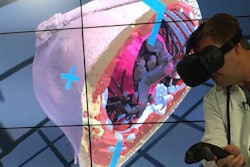"When carefully annotated, observations of features of lung nodules in CT images of patients with cancer have strong correlations with gene clusters obtained via RNA sequencing of excised tumors," said Sandy Napel, PhD, a professor of radiology and co-chief of integrative biomedical imaging informatics at Stanford. "These gene clusters capture canonical pathways and have strong associations with survival."
The study began with CT images of 113 non-small cell lung cancer (NSCLC) patients. A radiologist annotated CT images of each tumor with 89 image features using descriptions of radiologic features in shape, margin, texture, and background lung characteristics. Next, RNA was extracted from each tissue sample and converted into a library for paired-end RNA sequencing. Finally, the RNA sequencing data were clustered into 56 metagenes and filtered for homogeneity into five external cohorts totaling more than 1,200 NSCLC patients.
From this, the researchers identified the top 10 metagenes with the highest cluster homogeneity. The defined metagenes are highly coexpressed genes that relate to important biological processes including hypoxia, cell cycles, and immune response.
Correlating metagenes and semantic features yielded 34 significant associations, in which ground-glass opacities and nodule attenuation are strongly correlated with the metagene that defines the epidermal growth factor receptor (EGFR) pathway.
"Thus, human observations capturing tumor phenotypic characteristics can be used to noninvasively associate with molecular properties of NSCLC with prognostic implications," Napel said.



















